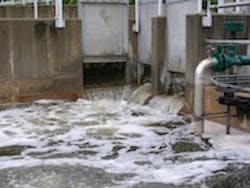Water Organizations Support WIFIA Loan Program for Water Infrastructure
In a statement to the U.S. Senate Subcommittee on the Water and Wildlife, three of the nation’s leading water organizations advocated for the enactment of a Water Infrastructure and Innovations Act (WIFIA) to reduce the costs of critical water infrastructure projects.
In the statement, the American Water Works Assn. (AWWA), the Assn. of Metropolitan Water Agencies (AMWA) and the Water Environment Federation (WEF) also urged the continuing and strong federal support of existing state revolving fund (SRF) programs, which provide low-interest loans for water projects and would be supported in part by the proposed WIFIA program.
“Lowering the cost of borrowing for water and wastewater infrastructure is an important way to leverage local funding and help America rebuild and rehabilitate our aging water infrastructure,” the statement said.
The water organizations stressed that Americans are best served by water systems that are self-sustaining through rates and other local charges. By providing low-interest loans to water utilities, however, WIFIA would lower the cost of capital for communities while having no or little effect on the federal budget deficit. WIFIA would access funds from the U.S. Treasury at near-treasury rates, and those funds would be repaid to the WIFIA with interest. WIFIA is to be modeled after the successful Transportation Infrastructure Finance and Innovations Act, commonly known as TIFIA.
The need for increased investment in aging water and wastewater infrastructure is well documented. The U.S. Environmental Protection Agency’s most recent drinking water and clean water needs surveys concluded that water and wastewater systems face more than $600 billion in infrastructure improvement costs through 2028 to simply maintain current levels of service.
“Americans can be proud of the progress we have made in protecting public health and the environment thorugh past investment in water infrastructure, but we risk a reversal of that progress unless significant new investments are made in our aging water and wastewater systems,” the statement said.
Source: American Water Works Assn.
